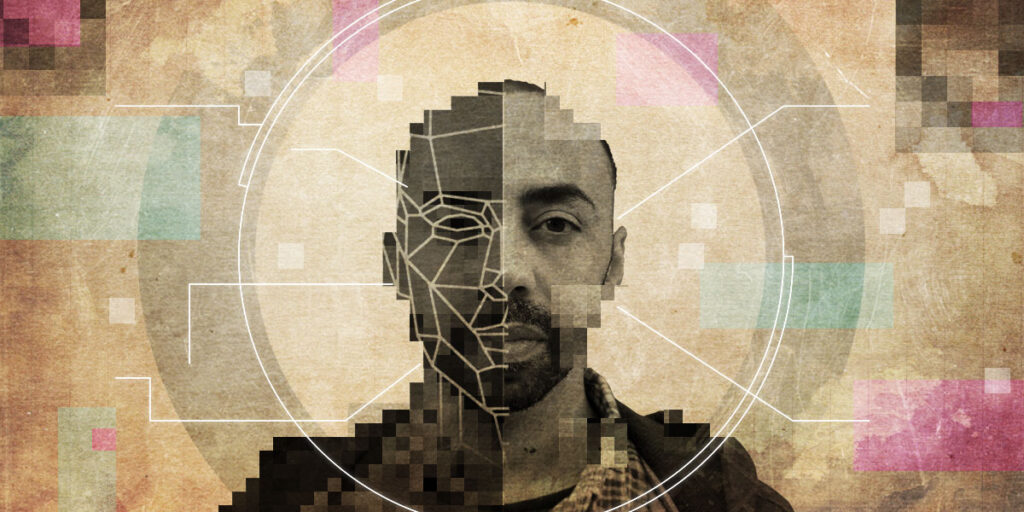The Detroit Police Department recently agreed to place strict limits on its officers’ use of facial recognition technology as part of a settlement brought by victims of the flawed technology — the first such agreement of its kind.
Robert Williams, a black man living in a suburb of Detroit, filed a lawsuit against the Detroit Police Department after he was arrested in his home in front of his wife, daughter, and neighbors for a crime he did not commit. After he shoplifted from a watch store, police used facial recognition technology to pull a blurred still image from security camera footage and misidentified Williams as the culprit.
The terms of the agreement mean that Detroit Police can no longer use facial recognition technology (FRT) as a substitute for responsible policing. Put simply, facial recognition matches are no longer the only evidence police use to justify an arrest.
FRT creates an “imprint” from a facial image and compares that imprint to other images, which are often databases consisting of police mugshots, driver’s license images, or images collected from the internet. The technology itself has many issues, including being highly inaccurate for certain demographics, particularly black men and women. Detroit Police use DataWorks Plus software to submit facial recognition queries to the Statewide Network of Agency Photos (SNAP), a database run by the Michigan State Police. Approximately 580 local, state, and federal agencies and their subdivisions have desktop access to SNAP, according to data obtained by EFF through public records requests.
The settlement agreement’s new rules prohibit arrests based solely on the results of facial recognition or on mugshot sorting (a common police procedure in which witnesses are asked to identify a perpetrator from a “sort” of images) done immediately after facial recognition identifies a suspect. This dangerous simplification has led to partial matches, combined with other unreliable evidence, such as eyewitness identifications, leading police to arrest people who clearly could not have committed crimes, as was the case with Robert Williams, who was out of state on the day of the crime. Because facial recognition finds people who look like a suspect, putting that person directly into a police sorting run would likely mean that witnesses would pick the person who most resembled the suspect they saw, almost certainly ensuring that people falsely accused by the technology would receive the majority of the charges.
Under Detroit’s new rules, when police use facial recognition technology during an investigation, they must record detailed information about their use of the technology, such as the quality of the photos and the number of photos of the same suspect that weren’t identified by FRT. If an investigation results in charges, prosecutors and defense attorneys will have access to information about the use of FRT in the case.
While the Detroit Police Department’s new facial recognition rules fall short of the outright bans on the technology passed by San Francisco, Boston, and at least 15 other municipalities, they are among the strictest regulations adopted in the country. While Detroit’s new rules are an important step in the right direction, only a total ban on government use of facial recognition can fully protect against the many dangers of this technology. Facial recognition rules jeopardize the right of everyone to protest government misconduct without suffering retribution or retaliation for exercising their right to free speech. Giving police the ability to fly drones over protests and identify all protesters undermines the right of everyone to freely interact with opposing groups and criticize government officials without fear of retaliation from those in power.
Moreover, FRT undermines racial justice and threatens civil rights. Study after study has revealed that these tools fail to reliably identify people of color. According to the city of Detroit’s own data, about 97% of referrals in 2023 were for Black suspects. When asked at a public meeting in 2020, then-Police Chief James Craig estimated that the technology misidentifies people 96% of the time.
Williams was one of the technology’s first victims, but by no means the last: In Detroit alone, police wrongfully arrested at least two people based on facial recognition false matches: Porcha Woodruff, a pregnant black woman, and Michael Oliver, a black man who lost his job as a result of his arrest.
Many other innocent people have been arrested elsewhere and in some cases jailed. The results have been life-altering. One man was sexually assaulted while incarcerated due to a misidentification by FRT. Police and governments have proven time and again that they cannot be trusted to use the technology responsibly. Many departments have already acknowledged that FRT results alone do not justify an arrest, but that is cold comfort to people like Williams, who are still being victimized despite the reassurances police give to the public.
It’s time to take FRT out of the hands of law enforcement altogether.

